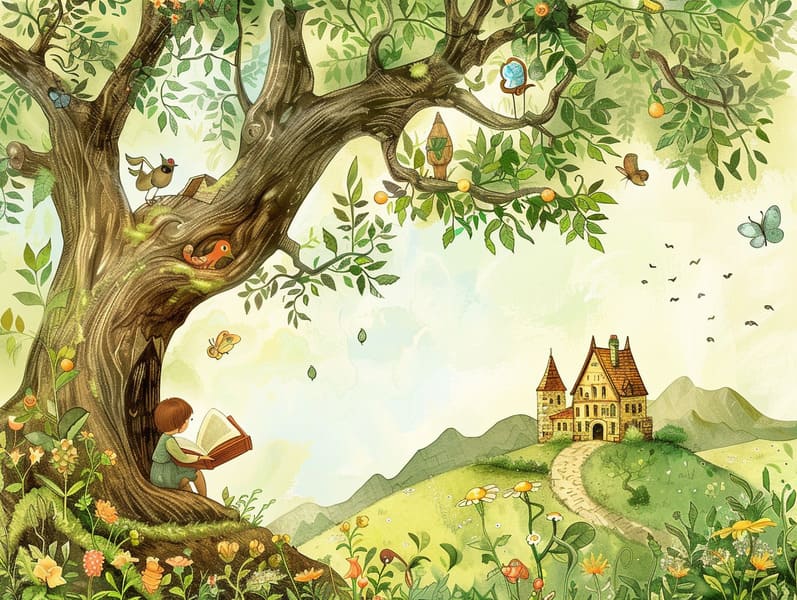The Formation of Fairy Tales and the Unceasing Majesty.
The Formation of Fairy Tales and the Unceasing Majesty.
Blog Article

Fairy tales have deep roots. These stories have been recounted from one generation to the next long before they were ever inscribed. They arose from a variety of backgrounds, including Eastern traditions. They were initially shared among adults, often carrying themes and messages concerning the societal norms and beliefs of the time.
The renowned Brothers Grimm, Jacob and Wilhelm (the Grimm brothers), were among the first to compile and publish many of these beloved tales. Their volume, "Grimm's Children's Stories," included narratives like "The Little Glass Slipper," "Hansel and Gretel," and "Snow White," which have since become hallmarks in the world of timeless fairy tales. Similarly, Hans Christian Andersen's fanciful fairy tales, such as "The Mermaid's Tale," and "The Story of the Ugly Duckling," have gained the love worldwide, solidifying their place in the pantheon of timeless fairy tales.
Even though they are old, these tales remain as pertinent as ever, especially as children's night stories. These delightful tales are now available in multiple formats, including richly illustrated books, captivating animations, and digital fairy tales.
Their enduring popularity can be ascribed to several enchanting factors:
Moral Lessons: Traditional fairy tales often impart important moral lessons. Narratives like "The Shepherd Boy and the Wolf" teach the merit of sincerity, while "The Race of the Tortoise and the Hare" illustrate the virtues of tenacity and modesty. These tales offer little ones clear distinctions between ethical and unethical, shaping their moral compass in a soft yet lasting way.
Empathy and Understanding: Timeless fairy tales frequently illustrate heroines facing challenges and struggles, inspiring children to understand with their struggles and root for their triumphs. For instance, "Beauty and the Beast" conveys the value of looking past the exterior to see the inner being of a character, building insight and appreciation.
Cultural Knowledge: Many fairy tales are deeply embedded in the cultural contexts from which they sprang. Engaging with these tales can provide illuminating insights into different social structures, promoting a sense of global insight and comprehension.
Fantasy and Innovation: The mythical elements in ancient fairy tales—enchanted objects—generate children’s innovative ideas. These tales move readers to extraordinary realms, firing up innovative thinking and a sense of mystery that lasts a lifetime.
Old fairy tales are not only whimsical but also pedagogical. They work as bewitching tools in building various mental and emotional abilities in little ones. When timeless fairy tales are narrated, they foster language proficiency by presenting new phrases and sophisticated sentence structures. This practice also promotes hearing abilities and mindfulness, as young readers follow the story, anxious to see what happens next.
Furthermore, reflecting on the themes and characters of classic fairy tales can promote thought processes and read more thought processes. Young ones are taught to detect patterns, expect results, and get cause and effect. These examinations also advance young readers express their thoughts and feelings, promoting their emotional intelligence.
In today’s online age, the prevalence of online storybooks has made these tales more reachable than ever. Online platforms and applications supply comprehensive collections of traditional fairy tales that can be looked at or played anytime, anywhere. Fairy tales narrated are particularly favored, supplying an enjoyable way for the young to delight in these bewitching tales. Voice books and narrated videos lead characters and settings to life, often paired with enchanting sound effects and harmonies that augment the tale-telling adventure.
The unfading fascination of ancient fairy tales lies in their ability to adapt to present eras while keeping hold of their underlying messages. Contemporary reimaginings of these fairy tales often feature more diverse figures and modern settings, making them relatable to today’s audience. However, the underlying themes of spirit, humanity, and impartiality remain unchanged, continuing to resonate with listeners of all ages.
Old fairy tales also offer a sense of assurance and understanding. They provide a ordered narrative with a evident beginning, middle, and end, often drawing to a close with the resolution of conflicts and the triumph of morality over immorality. This predictability can be relieving for young readers, rendering a sense of sturdiness in an variable world.
Timeless fairy tales continue to mesmerize and edify new generations, maintaining their attraction and importance in modern society. As children's night stories, they deliver up a perfect blend of fascination and comprehension, sustaining moral values, empathy, and creativity. The prevalence of digital fairy tales and the popularity of fairy tales told out loud warrant that these timeless fairy tales remain accessible to new generations.
By holding onto and narrating these fairy tales, we continue to celebrate the rich tapestry of human imagination and cultural heritage. Whether you are enjoying a beautifully illustrated book, perusing a electronic collection, or listening through an audio story, the magic of old fairy tales is always within reach. These fairy tales emphasize of the eternal spell of stories and its ability to draw us together across epochs and places.
Regardless if you are enjoying a richly illustrated book, exploring a virtual library, or listening to an read-aloud book, the allure of classic fairy tales is always within reach.
These narratives teach us of the ageless strength of fairy tales and its ability to bond us across eras and regions, forming a connection that captivates and teaches alike.